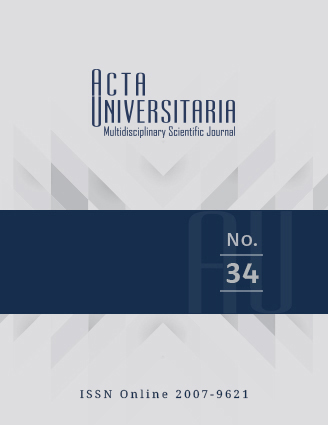Difficulties of graphic design students in learning mathematical statistics to visualize data
Published 2024-12-11
How to Cite
Abstract
In the current context of information overload experienced by society, the construction of statistical graphics is a relevant task for the graphic design profession. This research aimed to identify the obstacles that first-semester graphic design students face when constructing statistical graphics. Using an action-research approach, an educational intervention was implemented using digital presentations about the characteristics of different types of statistical graphics. A significant increase in the conceptual knowledge of statistical graphics was observed in students; however, the practical application did not show the same results, in that the students faced difficulties when selecting and constructing statistical graphics without the assistance of the teacher. Although improvements in learning were observed, the development of these graphic communication skills requires time and work with specific characteristics. More focused interventions are required using guides and teaching materials to achieve significant progress in learning.
References
- Arcavi, A. (2003). The role of visual representations in the learning of mathematics. Educational Studies in Mathematics, 52, 215-241. https://doi.org/10.1023/A:1024312321077
- Asamoah, D. (2022). Improving data visualization skills: a curriculum design. International Journal of Education and Development Using Information and Communication Technology, 18(1), 213–235. https://eric.ed.gov/?id=EJ1345404
- Batanero, C., & Díaz, C. (2011). Estadística con proyectos. Universidad de Granada.
- Binder, K., Krauss, S., & Bruckmaier, G. (2015). Effects of visualizing statistical information—An empirical study on tree diagrams and 2 × 2 tables. Frontiers in Psychology, 6, 1-10. https://doi.org/10.3389/fpsyg.2015.01186
- Brendefur, J. L., Thiede, K., Strother, S., Bunning, K., & Peck, D. (2013). Developing mathematical thinking: changing teachers' knowledge and instruction. Journal of Curriculum and Teaching, 2(2), 62-75. https://doi.org/10.5430/jct.v2n2p62
- Contreras, J. M., Molina, E., Martínez, F., & Ruz, F. (2021). Disposiciones de ciudadanos españoles ante noticias con gráficos relacionadas con la COVID‐19. Sociología y Tecnociencia, 11(2), 196–212. https://revistas.uva.es/index.php/sociotecno/article/view/5185
- Edwards-Groves, C., & Rönnerman, K. (2022). Action Research conceptualised in seven cornerstones as conditions for transforming education. IJAR – International Journal of Action Research, 18(2), 116–133. https://doi.org/10.3224/ijar.v18i2.03
- Eichler, A., & Zapata-Cardona, L. (2016). Empirical research in statistics education. Springer Open. https://doi.org/10.1007/978-3-319-38968-4
- Eikeland, O., Frimann, S., Hersted, L., & Borup, J. (2022). Are action researchers mixed up? Reviewing and revising basic assumptions, concepts, and terminology in and by means of action research. IJAR – International Journal of Action Research, 18(2), 165–182. https://doi.org/10.3224/ijar.v18i2.06
- Engel, J., Ridgway, J., & Weber, F. (2021). Educación estadística, democracia y empoderamiento de los ciudadanos. Paradigma, 42(1), 01–31. https://doi.org/10.37618/PARADIGMA.1011-2251.2021.p01-31.id1016
- Forbes, S., Chapman, J., Harraway, J., Stirling, D., & Wild, C. (2014). Use of data visualisation in the teaching of statistics: a New Zealand perspective. Statistics Education Research Journal, 13(2), 187–201. https://doi.org/10.52041/serj.v13i2.290
- Hammadi, S. S., Majeed, B. H., & Hassan, A. K. (2023). Impact of deep learning strategy in mathematics achievement and practical intelligence among high school students. International Journal of Emerging Technologies in Learning (IJET), 18(6), 42–52. https://doi.org/10.3991/ijet.v18i06.38615
- Hayn-Leichsenring, G. U., Vartanian, O., & Chatterjee, A. (2022). The role of expertise in the aesthetic evaluation of mathematical equations. Psychological Research, 86(5), 1655–1664. https://doi.org/10.1007/s00426-021-01592-5
- Isaza, Y. L., & Escobar, J. V. (2024). Análisis de la educación matemática crítica como posible guía para el diseño de estrategias metodológicas. Revista Interamericana de Investigación Educación y Pedagogía RIIEP, 17(1), 376–397. https://doi.org/10.15332/25005421.9492
- Janse van Rensburg, A. (2022). Retrospective action research on facilitating equitable learning outcomes in a diverse class. IJAR – International Journal of Action Research, 18(3), 247–267. https://doi.org/10.3224/ijar.v18i3.04
- Kirk, A. (2020). Data visualisation literacy – Learning to see. Revista de Contabilidad y Dirección, 31, 37–48. https://accid.org/wp-content/uploads/2021/12/Data-Visualisation-Literacy-Learning-to-See_watermark-1.pdf
- Lazarova, L. K., Stojkovikj, N., Stojanova, A., & Miteva, M. (2022). Application of graph theory in teaching and understanding of the mathematical problems. En 2022 IEEE Global Engineering Education Conference (EDUCON), pp. 1594-1601. https://doi.org/10.1109/EDUCON52537.2022.9766566
- Luna-Gijón, G., & Ruiz-Morales, Y. E. (2023). Enseñanza de las matemáticas en diseño gráfico para aprender visualización de datos y diseño de información. Acta Universitaria, 33, 1–25. https://doi.org/10.15174/au.2023.3572
- Maltese, A. V., Svetina, D., & Harsh, J. A. (2015). Research and teaching: data visualization literacy: investigating data interpretation along the novice-expert continuum. Journal of College Science Teaching, 45(01), 84–90. https://doi.org/10.2505/4/jcst15_045_01_84
- National Research Council. (1990). Reshaping school mathematics: a philosophy and framework for curriculum. The National Academies Press. https://doi.org/10.17226/1498
- Organization for Economic Cooperation and Development (OECD). (2019). PISA 2018 Assessment and Analytical Framework. PISA, OECD Publishing. https://doi.org/10.1787/b25efab8-en
- Rellensmann, J., Schukajlow, S., & Leopold, C. (2017). Make a drawing. Effects of strategic knowledge, drawing accuracy, and type of drawing on students’ mathematical modelling performance. Educational Studies in Mathematics, 95(1), 53–78.
- https://doi.org/10.1007/s10649-016-9736-1
- Rellensmann, J., Schukajlow, S., & Leopold, C. (2020). Measuring and investigating strategic knowledge about drawing to solve geometry modelling problems. ZDM Mathematics Education, 52, 97–110. https://doi.org/10.1007/s11858-019-01085-1
- Rubel, L. H., Nicol, C., & Chronaki, A. (2021). A critical mathematics perspective on reading data visualizations: reimagining through reformatting, reframing, and renarrating. Educational Studies in Mathematics, 108, 249–268. https://doi.org/10.1007/s10649-021-10087-4
- Salcedo, A., González, J., & González, J. (2021). Lectura e interpretación de gráficos estadísticos, ¿cómo lo hace el ciudadano?. Paradigma, 42(1), 61–88. https://doi.org/10.37618/PARADIGMA.1011-2251.2021.p61-88.id1018
- Su, C. S., Díaz-Levicoy, D., & Hsu, C. C. (2024). Integración del desarrollo sostenible en la enseñanza de la Estadística y Probabilidades: Un análisis de los libros de texto de Matemática de la Educación Primaria. Educación y Humanismo, 26(46), 222–246. https://doi.org/10.17081/eduhum.26.46.6602
- Tufte, E. (2001). The Visual Display of Quantitative Information. Graphics Press.
- Usova, T., & Laws, R. (2021). Teaching a one-credit course on data literacy and data visualisation. Journal of Information Literacy, 15(1), 84-95. https://dx.doi.org/10.11645/15.1.2840
- Watson, J. M. (2006). Statistical literacy at schools: growth and goals. Lawrence Erlbaum Associates.
- Wheelan, C. (2014). Naked Statistics. W.W. Norton & Company.


